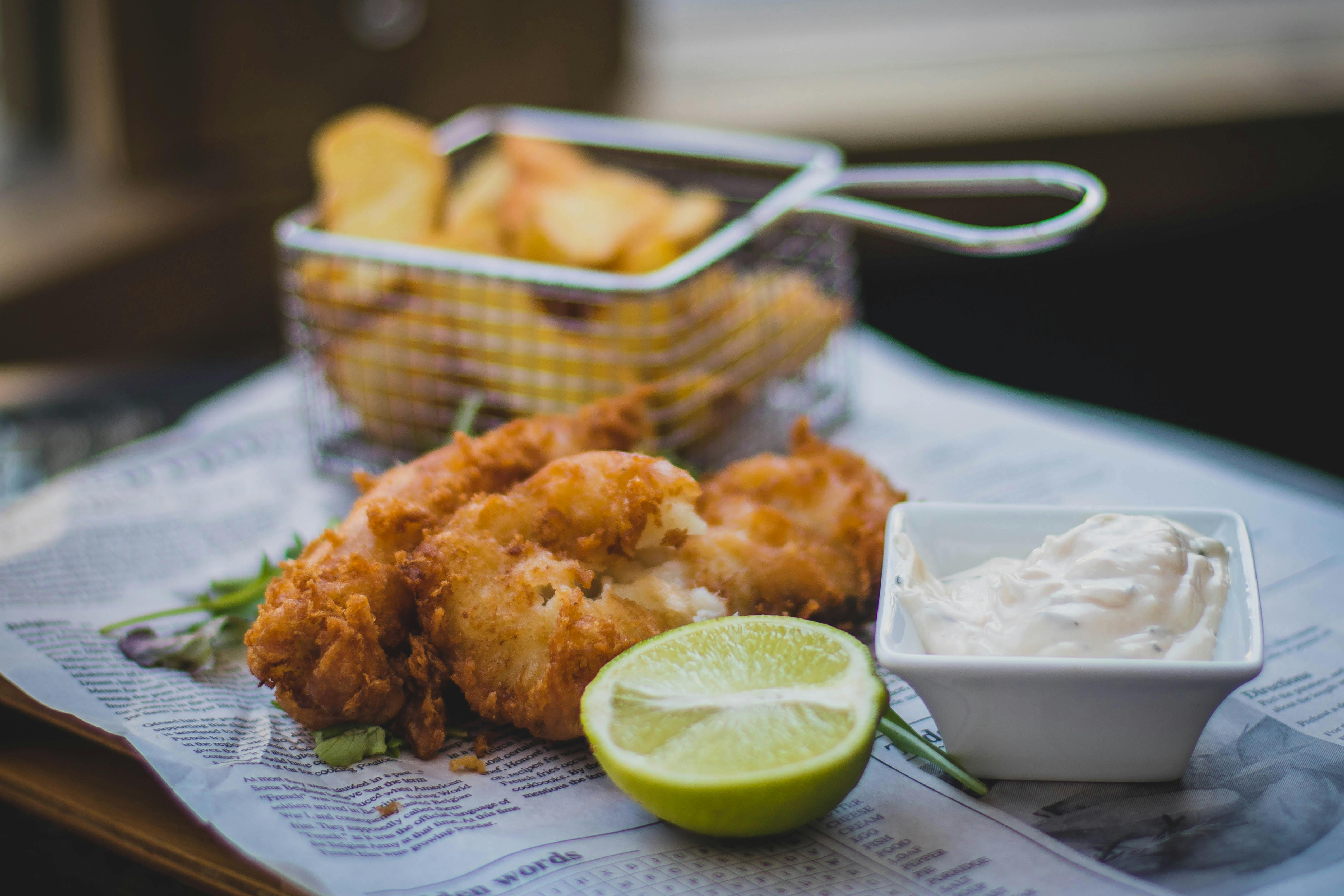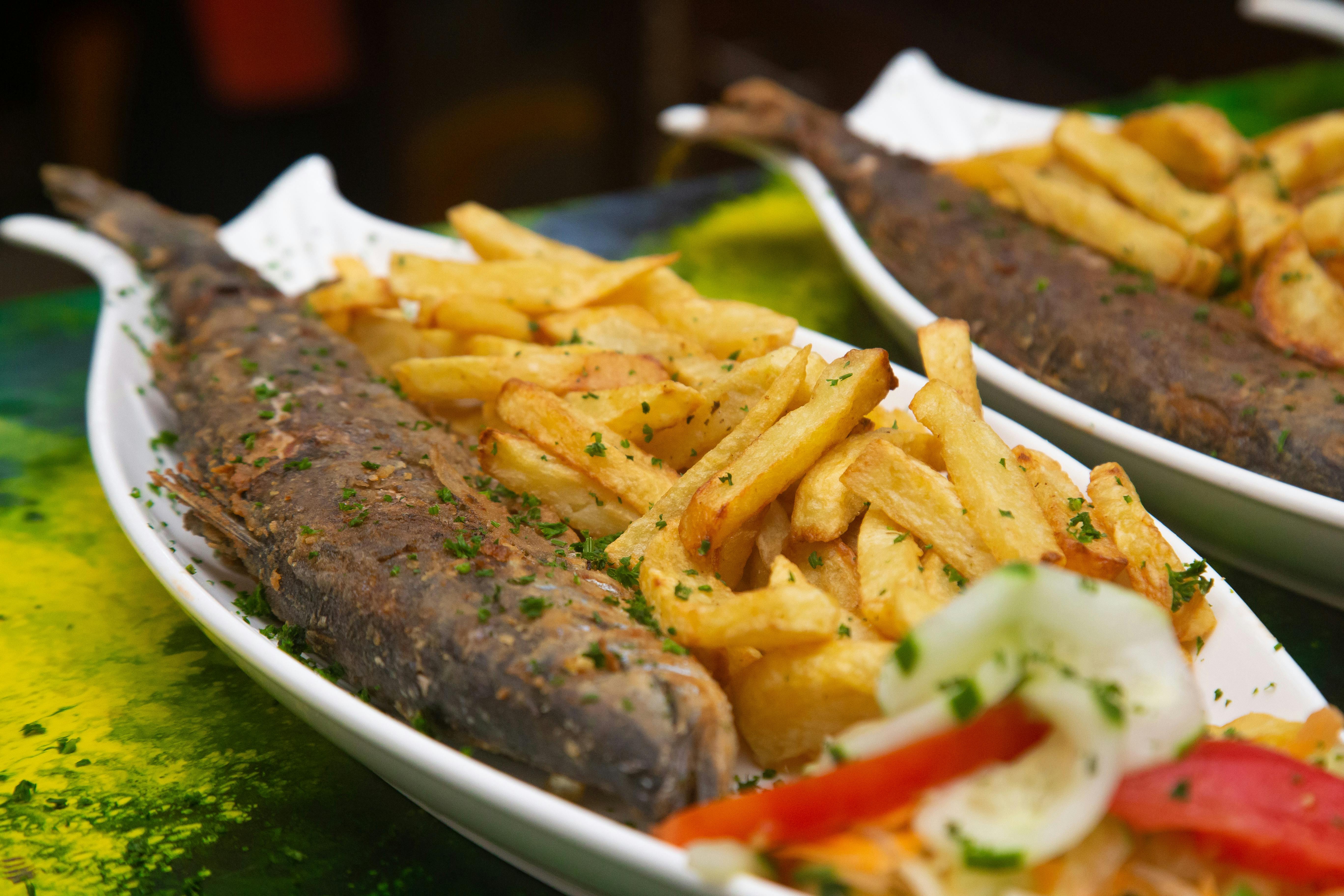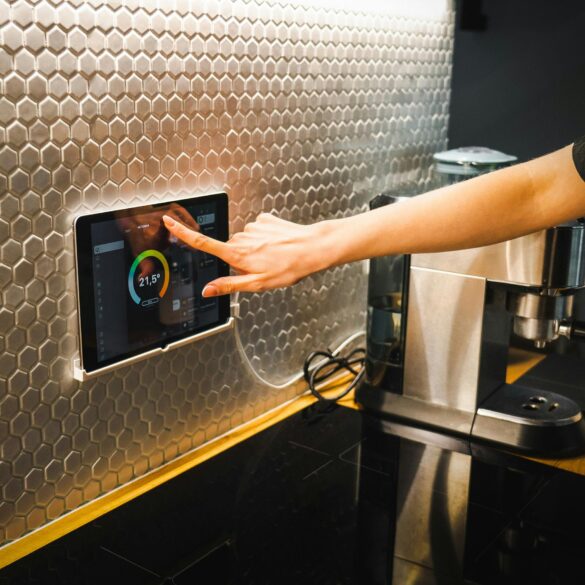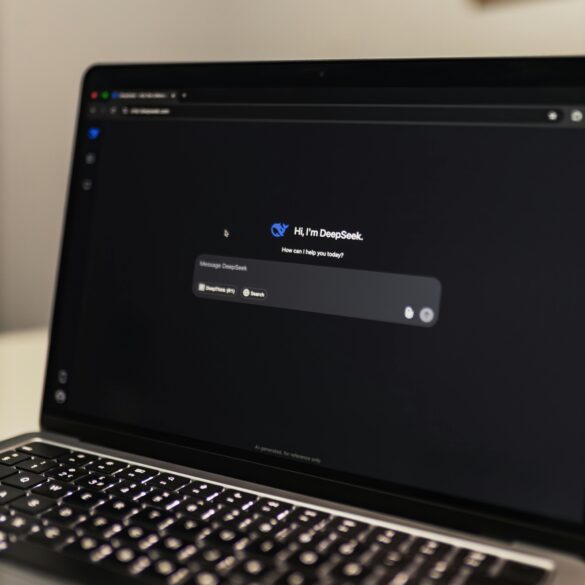Fish and Chips Secrets: UK Experts Share Crispy Results at Home
Ever bitten into a fish and chips meal so crunchy and light that you instantly wondered, “How do British chefs make it THIS perfect?” Honestly, I’ve asked myself that a hundred times, especially after a particularly disappointing attempt in my own kitchen—soggy chips, limp batter, the whole sorry lot. Over the years, after talking shop with UK professionals, shadowing fryers in London and Brighton, and testing every home recipe I could find, I’ve uncovered a set of secrets (real, not just the ones you see on most foodie blogs) that bring restaurant-level results right onto your own plate.
Before I dive in, let’s set expectations. This isn’t your standard “just use beer in the batter” guide. We’re going deep into authentic British culinary tradition, practical chef tricks, real mistakes, and the science behind crispiness—plus some self-corrections and genuine reflections from my own kitchen disasters and triumphs. Whether you’re an absolute beginner or an intermediate home cook ready for advanced tweaks, you’ll find something valuable here. Just yesterday, I revisited an expert’s potato advice—changed my chip game for good.
Classic Origins & History
Let me step back a moment to really anchor this. Fish and chips aren’t just a dish—they’re a multi-generational ritual deeply embedded in UK food culture. The pairing first took off in the mid-1800s when fried potato shops (“chip shops”) proliferated in industrial towns, providing cheap comfort to working families. By the First World War, fish and chips were so vital that they were never rationed—a government concession to morale1.
Just last year, I sat outside a seaside chippy in Whitby, North Yorkshire, wrapped in newspaper and watching families queue for the same haddock-fry tradition that’s been running for 100+ years. It struck me: most Brits carry childhood memories of fish and chips—rain, seagulls, salt, and malt vinegar. That’s where authenticity starts.
Key Insight
If you want truly crispy results at home, don’t just follow recipes. Absorb the history and mindset that UK chefs bring—every detail matters, every step has a story.
Essential Ingredients & UK Techniques
Funny thing: the pros rarely use complicated, expensive ingredients. The real secret is in the sourcing, prep, and timing. I remember a chef in London telling me, “The best batter is simple, but the technique must be exact.” Here’s what I’ve learned makes or breaks UK-style results:
- Chips: Always Maris Piper or King Edward potatoes, peeled and cut thick.
- Fish: Fresh, flaky cod or haddock, never frozen, always patted dry.
- Batter: Combination of plain flour, a pinch of baking powder, ice-cold carbonated liquid (beer, soda water, or a mix), and salt.
- Oil: Beef dripping for tradition; sunflower or rapeseed for lighter results.
Each of these choices matters. Last month, I swapped out King Edwards for generic russets and got bland, chalky chips. Lesson learned—there’s no shortcut for ingredient selection2.
Did You Know?
Fish and chips remains the UK’s most popular takeaway, with over 10,500 specialty shops nationwide—far outnumbering McDonald’s outlets. Many rural chip shops still use locally rendered beef dripping for unmatched flavour3.
The Art of the Perfect Chip
What really puzzles me is how simple chips seem—until you taste the difference between limp fries and the kind of golden, shattering crunch you get in the best UK chippies. Here’s the hard-won process.
- Cut potatoes thick—aim for 1cm sticks. Rinse in cold water to remove surface starch.
- Blanch chips in 140°C oil (not smoking!) for 6-7 minutes until just soft but not colored. Drain and cool.
- Final fry at 190°C for 3-5 minutes, just before serving. Season immediately after draining on paper (not in the oil) for even crispiness.
Personal Insight
For years I made the mistake of skipping the cooling step between blanches—results were average at best. Now, I cool chips fully, sometimes freezing briefly—makes a WORLD of difference for that shattering crunch.
Chef-Level Batter Secrets
Here’s where home cooks often get anxious—and honestly, I used to mess this up all the time. UK pros understand that batter is a science. Back in 2019, during a London kitchen session, a head chef challenged me: “Show me your flour-and-water ratios—then I’ll show you why you’re missing the crunch.” What followed changed my approach forever.
- Use plain flour only. Self-raising or all-purpose messes with the crispness.
- Add baking powder for aeration; this traps bubbles and maximizes crunch.
- Keep all batter ingredients ICE-COLD. I chill flour, liquid, and bowl.
- The liquid (beer or fizzy water) must be carbonated—essential for airy texture.
- Rest the batter for at least 15 minutes, but never more than 30—over-resting kills it.
The magic comes not just from taste but the physics: cold batter hitting hot oil creates steam, lifting and crisping the shell. It’s not just folk wisdom; food scientists back it up4. My own best batches happened after keeping everything (including the whisk) ice-cold.
“This isn’t just comfort food—it’s a test of skill. Get the batter right, and you unlock the true British chip shop experience.”
Ever notice how beer batters taste more robust but sometimes get soggy? Turns out, carbonation alone is more critical than alcohol content. Last week, my home trials using only sparkling water outperformed every beer-based formula. Jury’s still out for me, actually—sometimes I crave that malty depth.
Fish Selection & Prep Tips
Fish matters almost as much as chips, but selecting the right fillet isn’t always obvious. The very best UK pros, like Rick Stein, insist on fresh, skinless cod or haddock from sustainable sources5. Here’s what consistently works for me:
- Dry fish completely before battering—any excess moisture sabotages crispiness.
- Cut fillets thick, around 3cm, for that classic pub proportion.
- Dust with flour before dipping in batter—a small step, but it creates a crucial barrier that keeps batter stuck and crispy.
- Don’t overcrowd the fryer. Each fillet gets solo time.
Oddly enough, I’ve seen professional kitchens use “fish racks”—wire mesh trays—to drain battered fish pre-frying. Tried this myself, and it’s a gamechanger for consistent results. What struck me most is how these small details add up to a transformative dish.
Pro Tip
To mimic restaurant results, gently shake off excess batter before frying. Perfect balance means crisp shell, not thick breading.
Mistakes to Avoid
Let’s be real: the internet is filled with half-baked tips for fish and chips. Here’s what I (and countless UK chefs) have actually seen sabotage home efforts, with self-corrections learned personally:
- Using warm batter—straight up ruins texture.
- Frying at the wrong oil temperature—below 180°C, batter absorbs oil and gets greasy.
- Skipping the flour dusting—results in slippage and patchy coating.
- Leaving chips in paper before serving—steam kills crunch.
- Serving right after frying—rest briefly on a rack for residual steam to escape.
On second thought: some folks try to “healthify” fish and chips in ways that wreck the core experience. I’ve experimented with air-frying, oven-baking, and other lower-fat hacks—none come close to classic results. The more I consider this, better to enjoy the dish as intended, then serve smaller portions.
Seasonality & Home Tweaks
Here’s a seasonal tip nearly every British expert echoes: timing is everything. Chips and fish must finish together for true chip shop brilliance. In winter, thicker cut chips hold heat better; in summer, lighter batter prevents soggy results. As we head into autumn, I tweak my method—fry chips a bit longer, use slightly thicker batter to counter weather-induced oil cooling.
Did You Know?
Most award-winning UK fish and chip shops offer seasonal tweaks—changing potato varieties, batter formulas, and fish based on sea conditions and crop cycles6.
Pro Tips for Ultimate Crunch
According to recent chef interviews, the very best results come from a handful of counterintuitive tweaks:
- Double-fry chips: not once, but twice, with a complete cool-down in between.
- Use a chip basket rack for draining, not just paper towels.
- Test a pinch of rice flour in batter—UK pros often mix it in for extra crispness.
- Keep fish fillet sizes identical for even frying—irregular portions mean inconsistent crunch.
How do I know these tricks work? Several pro chefs in London walked me through the entire process—each little detail brought me closer to the chippy I remember from childhood.
Call To Action
The next time you cook fish and chips, try just one chef’s technique. Write down your tweaks and results—you’ll master it faster than you think.

Britain’s Regional Fish & Chip Variations
Where do I even start? What struck me most during my travels across England and Scotland is how local chip shops adapt tradition based on region—and that matters if you’re aiming for truly authentic results. While cod reigned supreme in London chippies, haddock is king in Yorkshire, while Scotland often features “supper” portions with tartare sauce or “brown sauce” on the side. Which reminds me, I once tried “scraps” (fragments of fried batter, served as a topping) at a Newcastle shop—completely different experience but absolutely brilliant7.
Did You Know?
In Northern Ireland, chips are often served with “curry sauce,” while Welsh fish & chips commonly use locally sourced fish caught from coastal waters just hours before serving8.
| Region | Traditional Fish | Chip Style | Special Touch |
|---|---|---|---|
| London | Cod | Thick-cut, double-fried | Salt & malt vinegar |
| Yorkshire | Haddock | Golden, crispy, chunky | “Scraps” batter bits |
| Scotland | Haddock | Medium thickness | Brown sauce/tartare |
| Northern Ireland | Cod/Haddock | Golden, crisp, medium-cut | Curry sauce |
| Wales | Varies, often local catch | Hand-cut, thick | Fresh fish daily |
How to Serve It Authentically
Ask any Brit: the serving ritual is half the joy. At home, I go all in—brown paper, salt and malt vinegar, lemon wedges, tartare sauce, mushy peas, and classic newspaper wrapping. But there are surprising finesses I’ve picked up from professionals:
- Keep everything piping hot—chips first, fish on top.
- Season immediately after frying, never while still in the fryer basket.
- Serve in small batches if entertaining—crispness fades fast.
Oh, and here’s another thing: even presentation matters for the eating experience. Many pros use steel wire baskets, simple plates, or paper wraps not just for tradition, but for moisture control. I’m partial to the brown paper method—holds crunch, nostalgic vibe, easy clean-up.
“Serving is a celebration, not just a process. Salt, malt vinegar, and newspaper remind us why fish and chips is Britain’s soul food.”
Frequently Asked Fish & Chips Questions
- What oil is best for frying? Beef dripping is traditional for depth, sunflower oil for lightness. Both yield crispy results—a pro tip is to skim oil between batches.9
- Can I freeze chips before the final fry? Yes—brief freezing (10 min) after the first blanch maximizes crunch.
- How do I avoid soggy batter? Cold batter, hot oil, and thin even coating prevent oily, limp results.
- Why does fish sometimes turn mushy? Moisture—pat fillets dry, avoid flouring wet fish, and don’t over-fry.
Expert Quotes & Anecdotes
“Consistency is the hallmark of a great chippy. Every step counts, every batch is a test of skill.”
During a Brighton conference last spring, I watched Paul Goodfellow calibrate oil temperature by hand—not a thermometer in sight. This highlights British culinary trust in experience over gadgets, something that’s stuck with me ever since.
Another classic learning moment for me: three years ago, serving “crispy” chips only to find they’d softened under foil. The fix? Serve immediately, let guests help themselves, and skip the foil for good. Honestly, I reckon learning from real failures beats reading every recipe online.
Summary & Final Thoughts
If you take away anything from UK professionals about fish and chips, it’s this: real results come from mindful technique, not fancy ingredients, and learning from mistakes matters just as much as getting it right first time. My own journey—which honestly still includes the occasional soggy batch—has taught me that obsession with tradition, plus a willingness to adapt, is the fastest way to achieve crispy magic at home. Let that sink in for a moment.
The British approach isn’t just dogma; it’s an evolving practice that’s stayed relevant through changing tastes, ingredients, and technology. Whether you’re cooking on a rainy Tuesday or hosting friends for a fish and chips night, the process is just as rewarding as the meal itself. I love the feeling of anticipation as you hear the batter sizzle, smell the potatoes crisping up, and know that you’re carrying forward a little piece of the UK’s culinary heritage.
Ready for Next Level?
Keep experimenting, note your tweaks, and don’t be afraid to fail fast. The difference between a good cook and a great one is a willingness to try, fail, and adjust. Fish and chips isn’t just a recipe—it’s a journey through British food culture, family memories, professional wisdom, and kitchen discovery.
Future-Proofing & Repurposing Tips
- Break out key sections (ingredient tips, batter secrets) for quick social media reels or infographics.
- Use data tables and step-by-step guides for short educational videos or cooking classes.
- Extract expert quotes for food newsletters or podcasts.
- Summarize regional insights for travel and tourism marketing or local British guides.
Looking ahead, I’ll keep updating with new advice from UK pros, evolving home kitchen tricks, and wild culinary experiments (fish taco hybrids, anyone?). This post can easily become a foundational resource for anyone seeking not just crispy fish and chips, but an authentic British cooking experience—with all the mistakes, victories, and stories that make it real.
References



